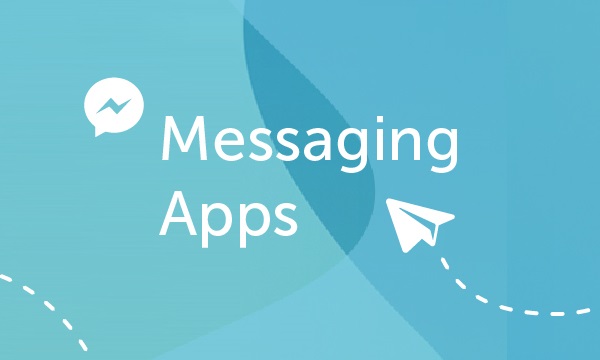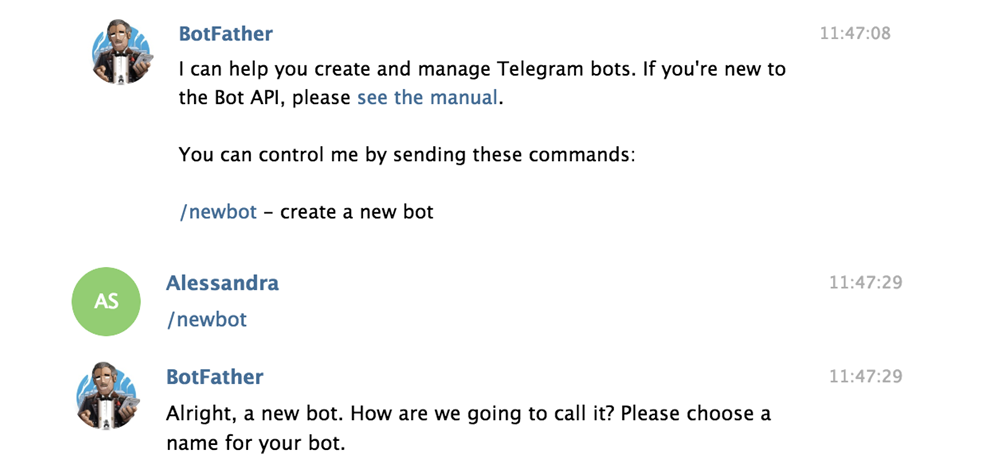Start a Conversation: MailUp has a New Messaging Apps Channel

MailUp enters the future, a future in which the communication between brands and customers embrace more the logic of conversation and dialogue.
This was the premise that gave rise to Messaging Apps, the new MailUp channel that offers companies instant messaging technology and features.
Facebook Messenger and Telegram have inaugurated the channel, within a project that will lead us to integrate in MailUp the most popular instant messaging platforms in the world.

From developing integrations to strategic support, from creating creative concepts to optimizing results.
The importance of messaging for companies
Messaging Apps is the tool and Conversation is the end, the horizon of marketing and relationship that companies will tend to more and more in the coming years.
Mark Zuckerberg spoke of it in 2016 at the Facebook F8: “Instant messaging is about to become the biggest platform to help users connect with all kinds of services in a new way”. On what basis did he affirm it? The numbers, those 30 billion messages sent every day by over two billion active users worldwide.
Facebook Messenger
Monthly active users: 1.3 billion
Telegram
Monthly active users: 200 million
The potential of messaging is not just about advertising, but covers the broader dimension of the relationship, helping to establish an intimate, personal, direct link between brands and customers.
Whatsapp, FB Messenger, WeChat and Viber have long since surpassed social networks like Facebook, Instagram and Twitter as a method for direct contact. The secret is their incisiveness, their immediacy, which does not however disadvantage the wealth of content: as you’ll discover, with the new MailUp channel you can launch campaigns on Messenger that are full of words, images, video, audio, even calls to action.
Messaging app users worldwide
From 1.58 to 2.48 billion from 2016 to 2021
(from Statista’s 2018 report)
This potential can be completely exploited by marketing objectives ranging from promotion to customer care, without forgetting the world of artificial intelligence, which between bots and machine learning will open a world up to messaging platforms.
But now let’s dive further in and find out what you can do with the new Messaging Apps channel.
Create, send, automate: how Messaging Apps works
Using the new Messaging Apps channel is very simple. You’ll find it in your MailUp platform as a new item in the section Messages, next to Email, SMS and Social.
It’s all very intuitive. Once inside Messaging Apps, you’ll have a choice between the two platforms currently available (as anticipated, new ones will be added soon): on the one hand Facebook Messenger, on the other Telegram.

The operations to create, send, and automate are more or less the same for the two platforms. Now let’s take a look at the basic actions to implement in your Facebook Messenger strategy and, where necessary, we’ll show you anything that’s different for Telegram.
1. Set up subscription activities
The first step is to prepare everything so that any Facebook and Telegram user can subscribe to receive news, promotions, and content through your instant messages.
Once you select Facebook Messenger, the platform will ask you to connect MailUp to your company’s Facebook account. Once you’ve selected the account, you can set up some Predefined events and messages. Let’s see a classic example: the welcome message, sent automatically when a new user subscribes.

As you can see from the screenshot above, just enter a keyword that triggers the automatic subscription and the text of the message that the new user will receive immediately afterwards.
The other automatic messages, all equally useful, work the same way:
- Unsubscribe message
- Invitation to subscribe
- Default reply
By configuring these messages you will already be well on your way, because MailUp will be able to manage this set of activities independently.
Telegram works the same way, but with one more step: you need to connect MailUp to the Telegram bot. This bot is called BotFather, and generates a token for all users which you will then have to enter in MailUp.

2. Create your message
This is the most interesting part: how to create a campaign with the Messaging Apps channel.
You can create messages that have the incisiveness of a text message and the wealth of an email: go to Messages > Messaging Apps > New message. You’ll see an editor similar to the one you use to create emails that, although simplified, allow you create messages that are refined in detail. This is what it looks like:

On the left you will find the different content modules with which to compose the message:
- Text
- Text and button
- Image
- Video
- Audio
- File
To select the module and insert it in the body of the message, simply click on the module. So let’s create the structure:

We’ve chosen the following modules:
- Image
- Text
- Button
All that remains is to fill in the forms with your content.

You may be wondering what the message will look like when it reaches your customers. Let’s take a look.

Just like all the other channels in the MailUp platform, with Messaging Apps you can also count on a reporting system that provides detailed results of your Messenger and Telegram campaigns.

3. Set the sending of automatic messages
The last fundamental step is setting up an automation that sends your campaigns based on predefined conditions and parameters.
Automatic sendings for the Messaging Apps channels rely on content sources, which we discussed in this post. If you don’t remember what they are, let us refresh your memory: the sources are nothing more than RSS feeds or files (csv, json and zip) that feed an automation with the contents stored within them, such as the latest blog articles published or news from your product catalog.
Nothing difficult, we assure you. The operations are very simple: once you have created the source, go to Automation > Content > Campaigns > New Campaign.

Select the channel on which you want to trigger the automatism:
Define:
- Campaign name
- Source to be connected
- Facebook Messenger platform on which to launch the campaign

On the next screen you have to:
- Select the template, choosing between a vertically oriented layout and one that arranges the different contents horizontally (creating a sort of slider).

- Select some advanced options, choosing whether to add images (clearly only if available in the source) or an additional button (displayed below each message), or both.
- Set the sending frequency, choosing to send based on a source update (i.e. when new content is uploaded) or by setting the day of the week and time.
Lastly, remember to display the preview in real time and enable the campaign!

Try the Messaging Apps channel today!
Did you get an idea? Communicating with your customers via Messaging Apps is very simple and opens up new doors to your brand.
Email, SMS, and from today, Facebook Messenger and Telegram. You have a single integrated platform to communicate with your customers, making a constant, quick, and immediate connection.
You have not tried MailUp, yet? You can try it for free for 30 days, just request a trial. You’ll soon discover how many things you can do.
